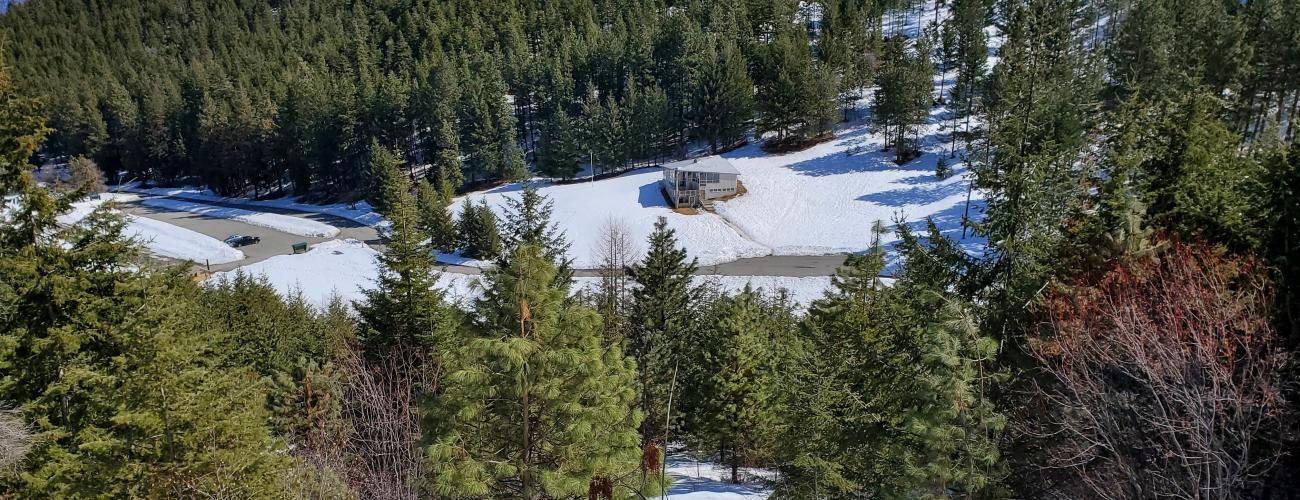Squilchuck State Park History
Squilchuck State Park is nestled in a mountain valley southeast of the city of Wenatchee in Central Washington.
Indigenous Lands
The park lies within the traditional territories of Sahaptian and Inland Salish Indigenous people whose present-day descendants include members of the Confederated Tribes and Bands of the Yakama Nation and the Confederated Tribes of the Colville Reservation. For thousands of years this area has provided habitats for a diverse community of life that forms the basis of their cultures. The valley of Squilchuck Creek served as one of several transportation routes between the Wenatchee Valley and the Kittitas Valley to the south.
Some tribes ceded ownership of the area to the US federal government under duress in the Yakima Treaty of Camp Stevens in 1855, keeping rights to harvest natural resources in their usual and accustomed places, including the Wenatchee and Columbia Rivers and their tributaries. Other tribes and bands including many of the residents of the Wenatchee Valley were subjected to a series of executive orders by US Presidents that established and dissolved reservation areas and ultimately relinquished ownership of their homelands to the US federal government.
In the late summer of 1879, US Army General O.O. Howard met with Indigenous leaders during the traditional seasonal gathering at the Wenatchee Confluence. He encouraged those who had not agreed to move to the Yakama Reservation to instead move to the Columbia Reservation established by President Rutherford B. Hayes a few months earlier. Some agreed, but those with the closest ties to the Wenatchee River valley and its fisheries declined. Ultimately, the Columbia Reservation was dissolved and most of the people were moved to the Colville Reservation.
Homestead Settlers
Government surveys were completed in 1881. Settlers took up land suitable for agriculture quickly, but the mountain foothills of today’s Squilchuck State Park were claimed more slowly. Matthew Bird received a Cash Entry patent for the northwest part of today’s park in 1892, purchased for its potential production of stone and timber. Two separate homestead settlers attempted to complete the federal government’s Homestead requirements on land in today’s Squilchuck State Park but relinquished their claims without proving up. On March 11, 1909, Fred Franklin received a Homestead Entry patent for 80 acres in the area of today’s Group Campground. On January 9, 1911, Quincy A. Hewlings received a Homestead Entry Patent for the remainder of today’s park, including the current park ranger residence near the park entrance.
In 1925, the Weeks family purchased portions of the Bird and Hewlings properties and moved into the house. The Weeks family planted lilac bushes and added to the fruit orchard on the property. They raised chickens, kept dairy cattle and draft horses, grew vegetables and cut hay from a field on the property. Produce from their farm and a plentiful supply of firewood in the surrounding forest allowed the family to weather the Great Depression in relative comfort.
Making A State Park
In the late 1940’s, local ski enthusiasts convinced the Weeks to let them install a ski tow on the property, south of their house and fields. The area became very popular as a winter recreation site and members of the Wenatchee community began to discuss ways of acquiring the land for public use. In 1952 Elizabeth May Weeks, her husband having recently passed away, sold the property to the Washington State Parks and Recreation Commission (WSPRC) for use as a state park. By the end of 1952, two additional parcels were purchased by the WSPRC, completing park ownership of the mountain vale.
Following the purchases, the Weeks’ son, John “Bud” Weeks, was hired as the park ranger, a position he held until his retirement 25 years later.
From 1952 until 1973 the WSPRC leased the ski concession at Squilchuck State Park to private operators. In 1953, the Squilchuck Lodge was built in the park to provide a location for a food concession and a fireplace for warming up. Beginning in 1974, the WSPRC entered into an operating agreement with Wenatchee Valley College to operate the winter recreation facilities in the park.
Volunteer Trail Construction
When Squilchuck State Park was closed in 2009 due to low visitation and state budget cuts, local resident and mountain bike enthusiast Matt Rose proposed trails and a bike skills course with jumps and pump tracks in the park to attract recreationists to the park. Approved by the WSPRC in 2014, the trail system has been developed primarily by volunteers with the Evergreen Mountain Bike Alliance, becoming a popular destination for bikers, hikers and trail runners in the summer and snowshoers and fat tire bikers in the winter.
Forest Health Projects
Like many parts of the eastern slopes of the Cascade Mountains, the forests of Squilchuck State Park had become overly dense and susceptible to disease, insect outbreaks and catastrophic wildfire due to decades of harvest and fire suppression. In 2018, the Washington State Legislature authorized funding for forests on the west side of the park to be thinned to build resilience and restore the forest to conditions similar to those stewarded for millennia by the Indigenous people of the area. Reducing forest stands from 200-1,200 trees per acre down to 27-70 trees per acre, while keeping large older trees, returned the forest to its traditional park-like setting of well-spaced trees separated by an open grassy forest floor. A similar project was completed on the eastern part of the park in 2023.
Sharing the histories of Washington’s state parks is an ongoing project. Learn more here.

